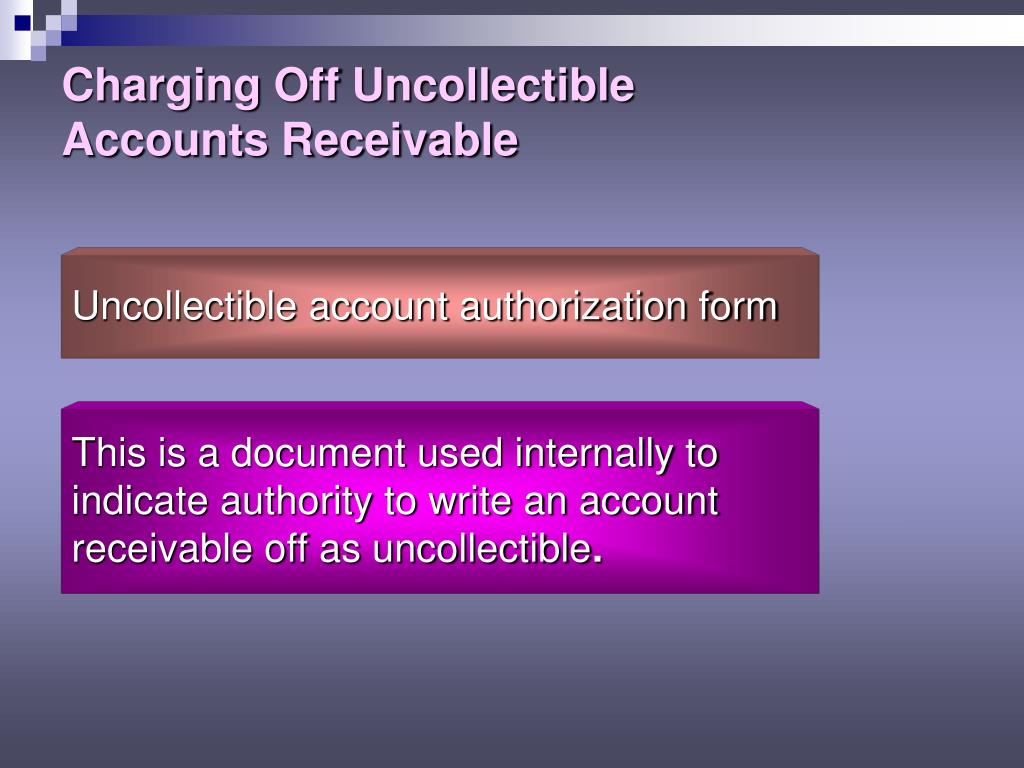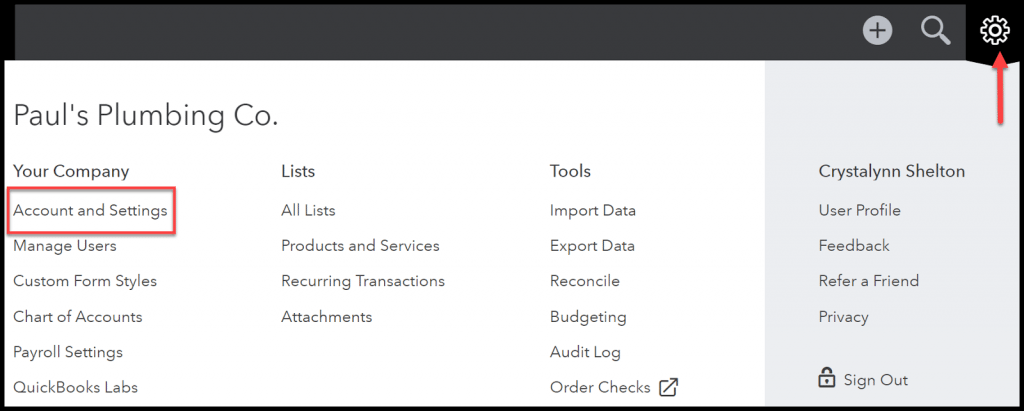-Hallo friends, Accounting Methods, in the article you read this time with the title Uncollectible Of Accounts Receivable, we have prepared this article well for you to read and retrieve the information therein.
Hopefully the content of article posts Uncollectible, which we write this you can understand. Alright, happy reading.
Title : Uncollectible Of Accounts Receivable
link : Uncollectible Of Accounts Receivable
Uncollectible Of Accounts Receivable
The two methods of accounting for uncollectible accounts receivable are a)the allowance method and the liability method b)the asset method and the liability method c)the direct write-off method and the liability method d)the allowance method and the direct write-off method. Accounts receivable is known as a control account. this means the total of all individual accounts found in the subsidiary ledger must equal the total balance in accounts receivable. the allowance method uses an estimate of uncollectible expense, also known as bad debts expense, and does not predict which individual accounts will be written off. Accounts uncollectible of accounts receivable uncollectible are loans, receivables or other debts that have virtually no chance of being paid. an account may become uncollectible for many reasons, including the debtor's bankruptcy.
Writing Off An Account Under The Allowance Method
The lender increased the client's line of credit, unaware that the accounts receivable balance included a number of aged and uncollectible accounts. minding the expectation gap in a cas engagement the risk management consists of the input item that is the output of operating performance output item (npls) and two output items including. Calculate the sum of the amounts of each portion you expect will be uncollectible to calculate the total amount of uncollectible accounts. for example, calculate the sum of $750, $200, $1,050, $1,500 and $1,350. this equals $4,850 in uncollectible accounts. Uncollectible accounts receivable is a loss of asset and decrease in revenue that is recognized by recording an expense known as uncollectible account expense. two methods are commonly used for recognizing uncollectible accounts expense in the books of seller. these are allowance method and direct write off method. Accountsuncollectible are loans, receivables or other debts that have virtually no chance of being paid. an account may become uncollectible for many reasons, including the debtor's bankruptcy.
Percentage of accounts receivable method example. suppose based on past experience, 5% of the accounts receivable balance has been uncollectible, and the accounts receivable at the end of the current accounting period is 150,000, then the allowance for doubtful accounts in the balance sheet at the end of the accounting period would be calculated using this allowance method as follows:. One way to estimate the amount of uncollectible accounts receivable is to prepare an aging. an aging of accounts receivable lists every customer's balance and then sorts each customer's balance according to the amount of time since the date of the sale. for example, assume that all sales are made. The journal entry also credits the accounts receivable account for $100. in combination, these two entries zero out the allowance for the uncollectible a/r account and remove the uncollectible amount from the accounts receivable account. writing off an actual, specific uncollectible receivable for invoice should be done on a case-by-case basis. One way to estimate the amount of uncollectible accounts receivable is to prepare an aging. an aging of accounts receivable lists every customer's balance and then sorts each customer's balance according to the amount of time since the date of the sale. for example, assume that all sales are made.
How Do You Estimate The Amount Of Uncollectible Accounts

Uncollectibleaccount Financial Definition Of
A simple method to account for uncollectible accounts is the direct write-off approach. under this technique, a specific account receivable is removed from the accounting records at the time it is finally determined to be uncollectible. the appropriate entry for the direct write-off approach is as follows:. The accounts receivable balances are accurate with the exception of the subset of uncollectible accounts. masshealth actively pursues the collection of all its accounts receivables, generally by offsetting them against masshealth payments for claims. Accountsreceivable was credited in the above journal entry because accounts receivable are assets and assets decrease with credits. the allowance for uncollectible accounts was debited in the above journal entry because this account represents an estimate of accounts receivable that will not be collected. Uncollectibleaccountsreceivable is a loss of asset and decrease in revenue that is recognized by recording an expense known as uncollectible account expense. two methods are commonly used for recognizing uncollectible accounts expense in the books of seller. these are allowance method and direct write off method.
How Do You Estimate The Amount Of Uncollectible Accounts

The uncollectible accounts expense (debited in the above entry) is closed into uncollectible of accounts receivable income summary account like any other expense account and the allowance for doubtful accounts (credited in the above entry) appears in the balance sheet as a deduction from the face value of accounts receivable. A company with significant amounts of accounts receivable experiences uncollectible accounts from time to time. if the company uses the direct write-off method, the effect of writing off an uncollectible receivable will be _____. a. negligible on net income b. a reduction in net income c. an increase in total assets. Allowance for uncollectible accounts definition. allowance for uncollectible accounts is a contra asset account on the balance sheet representing accounts receivable the company does not expect to collect. when customers buy products on credit and then don’t pay their bills, the selling company must write-off the unpaid bill as uncollectible.
Uncollectibleaccounts Expense Allowance Method
Debit: accounts receivable/notes receivable credit: allowance for uncollectible accounts received cash in full payment of sanderson company's account, previously written off as uncollectible (second entry). Uncollectibleaccount an account which cannot be collected by a company because the customer is not able to pay or is unwilling to pay. uncollectible uncollectible of accounts receivable account accounts receivable that a company cannot collect because the client is unable or unwilling to pay. if the client is simply unwilling to pay, the company can sue to collect what is owed; however.
Accountsreceivable is known as a control account. this means the total of all individual accounts found in the subsidiary ledger must equal the total balance in accounts receivable. the allowance method uses an estimate of uncollectible expense, also known as bad debts expense, and does not predict which individual accounts will be written off. waiver of rule it says would delay payment of receivables to retail electric suppliers under change in bill community solar, distributed energy resources asks if purchase of receivables should be offered the new york psc had
The two accounts affected by this entry contain this information: note that prior to the august 24 entry of $1,400 to write off the uncollectible amount, the net realizable value of the accounts receivables was $230,000 ($240,000 debit balance in accounts receivable and $10,000 credit balance in allowance for doubtful accounts). In order to properly account for uncollectible accounts receivable, companies reduce their resources and sources of resources for estimated uncollectible accounts receivable. for example, if a company with $50,000 of january credit sales estimates that 1. 5% of such sales will not be collected, it would be affected as follows. Allowance for doubtful accounts: an allowance for doubtful accounts is a contra-asset account that reduces the total receivables reported to reflect only the accounts receivable expected to be. This figure assumes gross accounts receivable is $75,500. when you determine that a particular customer’s account is uncollectible (maybe the customer died and left no estate or closed up shop), your next step is to remove the balance from both allowance for uncollectible accounts and the customer accounts receivable balance.
Uncollectible accounts receivable explanation accounting.
How to estimate uncollectible accounts dummies.